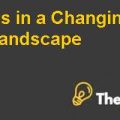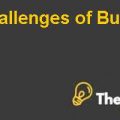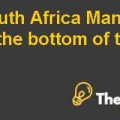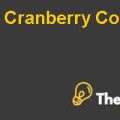Summary
Background
Elizabeth Arden, the cosmetic company has good strength in its product portfolio and well known to consumers due to its various cosmetic products worldwide. However, thecompany was performing sub-optimally as compared to the industrial benchmark and internal aspirations. Meanwhile, the increasing cost of logistics including distribution, outbound as well as supply chain overhead including the demand, material planning and purchasing labor.Since the expenses of those operations were increasing as a percentage of net sales.
Similarly, the company has no proper planning and forecasting technique, neither it has been using the market intelligence and strategic account management. However, the conventional techniques of planning and forecasting led to anoverestimation of important products with an error of 25% in estimation.Also, the company has independent suppliers that were responsible for obtaining all the raw material components, packaging products and contract filler to manufacture finished products. Similarly, it has maintained relationships with many independent suppliers, by whom it makes purchase orders.
However, the company used to purchase all raw materials from six independent suppliers and then thematerialwas shipped to the contracted manufacturer. That created complex management of logistics in the company and becauseof which the cost of thesupply chain was increasing along with the inventory caring cost. The inventory caring cost of the company was 4.2% of the net sales and 7.2% of the cost of goods sold. Similarly, the company was also experiencing errors in volume forecast that kept on varying by 30% which resulted in increased lead time and drove logistics costs above the industrial average cost.The company also has concern to improve fill rate.
Elizabeth Arden Executing Supply Chain Re-Engineering Harvard Case Solution & Analysis
Consequently, the company has manual labor intensive purchasing process and no centralized management system to take a look at the strategic purchasing. Due to this company was spending highcost on direct material purchasing and was not able to consolidate spending across brands and commodities.Moreover,the company uses the economy of scale to negotiate on the cost of materialwith the suppliers. However, the company has no plan in managing its procurement and supply chain to be viable in the market because the increasing complexity of the logistics fueled the cost.
Analysis and Evaluation
The company has acapital structure which is divided into debt and equity, whereas it has 41% debt and 59% equity.However, if we analyze the company’s balance sheet,(See Exhibit 1),which shows that company’s assets had increased by 24% in 2007 from 6% in 2006. It indicates that company is investing in long-term assets. Meanwhile, its short-term debt rose by 144 %, which indicates that company might have insufficient funds to meet with daily operations, although its working capital has also increased in that year to 6% from 2%. However, its long-term borrowing remains stable.Through this, we can analyze that there is variability in inventory which has been reduced by 33% in 2007 whereas, it had increased by 108% in 2006.
In addition to that, it can be determined that the company was not managing its inventory effectively, or there is no proper planning and forecasting of demand.Similarly, if we take a look at the company’s income statement(See Exhibit 2)......................
This is just a sample partical work. Please place the order on the website to get your own originally done case solution.








